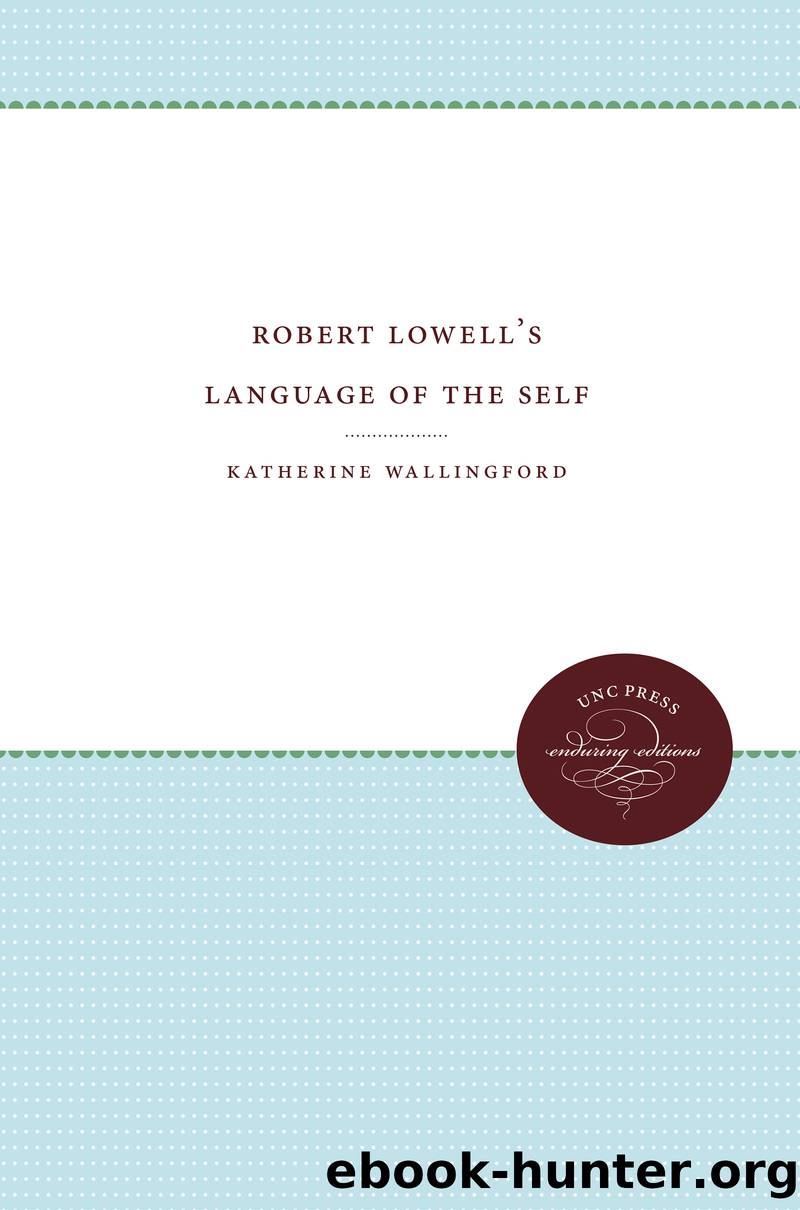Robert Lowell's Language of the Self by Katharine Wallingford

Author:Katharine Wallingford
Language: eng
Format: epub
Publisher: The University of North Carolina Press
Published: 2018-01-15T00:00:00+00:00
We must be careful not to force a ridiculous comparison here, but it is nonetheless true that as Anne freely associates from reverie to fantasy to memory throughout this long poem, she returns again and again to the reality of the cards that she holds in her hands and the Bible that faces her across the table, and their physical presence, like that of a therapist or any friendly âother,â causes her either to stop and reflect on what has gone before or to change the direction of her associations.
The structure of the poem itself reinforces our impression of interrelated subjects acting one upon the other, as Lowell gives words now to the narrator, now to Anne, in a seemingly random, conversational order. The narrator begins by describing those elements of the setting that will be important as starting points for Anneâs associations. Down the hill from the garden in which she sits is âa ruined burlap mill,â which will act to remind her of the history of Harryâs family: the glory of their beginnings, their commercial exploitation of the environment, their cruelty to the Indians, their subsequent decline (readers of Lord Wearyâs Castle may recognize this combination of elements from the earlier volume, in which Lowellâs own ancestors were characterized in much the same way). Near the ruined mill stands a statue of Persephone, who will figure largely in Anneâs fantasies; Staples has pointed out that Anne is âambivalent in all things, and for such a divided nature, Persephone, herself subjected to an alternating cycle of life and death, identified with the recurring seasons, is a fitting symbol.â28 (Again, the reader familiar with Lowellâs biography may think of the cycles of mania and morbid depression that had already, at the time of the writing of this poem, begun to affect the poet.)
Near where Anne sits is her husbandâs grave, and it is this physical object and the associations to which it leads that form the bulk of the poem, and to which the poem will return at its end.
The lady drops her cards. She kneels to furl
Her husbandâs flag, and thinks his mound and stone
Are like a buried bed. âThis is the throne
They must have willed us. Harry, not a thing
Was missing: we were children of a king.[â]
Download
This site does not store any files on its server. We only index and link to content provided by other sites. Please contact the content providers to delete copyright contents if any and email us, we'll remove relevant links or contents immediately.
4 3 2 1: A Novel by Paul Auster(11823)
The handmaid's tale by Margaret Atwood(7471)
Giovanni's Room by James Baldwin(6830)
Asking the Right Questions: A Guide to Critical Thinking by M. Neil Browne & Stuart M. Keeley(5370)
Big Magic: Creative Living Beyond Fear by Elizabeth Gilbert(5364)
Ego Is the Enemy by Ryan Holiday(4972)
On Writing A Memoir of the Craft by Stephen King(4677)
The Body: A Guide for Occupants by Bill Bryson(4603)
Ken Follett - World without end by Ken Follett(4453)
Bluets by Maggie Nelson(4284)
Adulting by Kelly Williams Brown(4246)
Eat That Frog! by Brian Tracy(4171)
Guilty Pleasures by Laurell K Hamilton(4128)
White Noise - A Novel by Don DeLillo(3838)
The Poetry of Pablo Neruda by Pablo Neruda(3828)
Fingerprints of the Gods by Graham Hancock(3749)
Alive: The Story of the Andes Survivors by Piers Paul Read(3743)
The Book of Joy by Dalai Lama(3714)
The Bookshop by Penelope Fitzgerald(3629)
